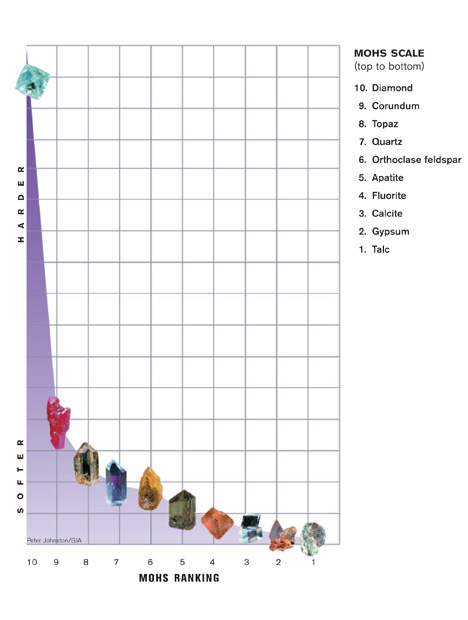Tanzanite Care and Cleaning Guide

Gem and mineral hardness is measured on the Mohs scale. The numbers are based on the relative ease or difficulty with which one mineral can be scratched by another. But the Mohs scale is deceptive. The steps between the minerals are not evenly spaced. For example, diamond is only one number away, but it’s many times harder than gems in the corundum family.

Tanzanite ranks 6 to 7 on the Mohs scale.
Zoisite (tanzanite) is 6 to 7 on the Mohs scale. It has fair to poor toughness and a property called cleavage, which is a tendency to break when struck. While tanzanite is not as hard or as tough as a stone like sapphire, it still can be worn in all types of jewelry with proper precautions against rough wearing or hard blows.Stability
Tanzanite is stable under normal wearing conditions, which means it’s resistant to the effects of heat, light, and common chemicals. Even so, tanzanite should not be subjected to very high temperatures or sudden temperature changes. It can be attacked by exposure to hydrochloric and hydrofluoric acids.
Cleaning
Warm, soapy water is always safe. Ultrasonic and steam cleaners are never recommended for tanzanite
Treatment and durability considerations
Tanzanite is routinely heat-treated to modify its color from a predominately brownish appearance to a predominately blue to purple appearance. The treatment is stable with no additional durability concerns.
There have been instances where tanzanite was coated to modify the color. Although rarely done, the coatings are not permanent and can be scratched or damaged through normal wear.
Like other transparent gemstones, tanzanite can be fracture filled to improve apparent clarity, although this is an uncommon tanzanite treatment method. The materials used to fill fractures in gemstones can alter in appearance over time.



